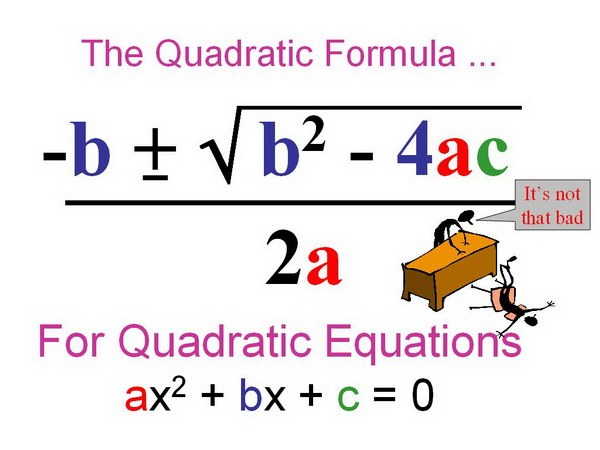You will need
- mathematical Handbook;
- calculator.
Instruction
1
Bring the polynomial to a square equation of the form ax2 + bx + c = 0 where a, b and c are arbitrary real numbers, with a in no case must not equal 0.
2
Substitute the values of the resulting quadratic equation into the formula for calculating the discriminant. This formula is as follows: D = b2 - 4ac. In that case, if D is greater than zero, the quadratic equation will have two roots. If D equals zero, both the calculated root, will be not only real, but equal. Third option: if D is less than zero, the roots will be a complex number. Calculate the value of the roots: x1 = (-b + sqrt (D)) / 2a and x2 = (-b - sqrt (D)) / 2a.
3
To calculate roots of a quadratic equation can also use the following formula: x1 = (-b + sqrt (b2 - 4ac)) / 2a and x2 = (-b - sqrt (b2 - 4ac)) / 2a.
4
Compare the two calculated root: root with the smallest value is the desired value you.
5
Not knowing the roots of a quadratic trinomial, you can easily find their sum and product. Use the vieta theorem, according to which the sum of the square roots of the trinomial represented in the form x2 + px + q = 0, is equal to the second ratio, that is, p, but with opposite sign. The product of the roots corresponds to the value of the free term q. In other words, x1 + x2 = – p, and x1x2 = q. For example, given the following quadratic equation: x2 – 5x + 6 = 0. To start, lay 6, two multiplier, and so that the sum of these multipliers was equal to 5. If you picked up the values correctly, then x1 = 2, x2 = 3. Test yourself: 3x2=6, 3+2=5 (as required, 5 with the opposite sign, i.e. "plus").
Note
Be careful not to make a mistake, placing signs!
Useful advice
The number with the sign "minus" is always less than positive. If I compare two negative values, then less of them will be the fact that the module is more.












